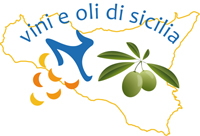16 May 2013
New IRVO virological analysis services

|
Infectious degeneration complex |
Arabis mosaic virus |
ArMV |
|
|
Leaf curl virus |
GFLV |
||
|
Leaf curl complex |
Curl virus Foliar 1,2 and 3 |
GLRa-V1 |
|
|
GLRa -V2 |
|||
|
GLRa-V3 |
|||
|
Curly wood complex |
Wood groove virus |
GVA
|
|
|
Wood pit virus |
GVB |
||
|
Mosaic complex
|
Infectious spot virus |
GFKV |
|
Furthermore, soil analyzes can be carried out for nematological research of Xiphinema Index.
For operating procedures, contact the IRVO technical-information desk located in Via Salvador Allende snc Canicattì (AG) tel./fax 0922-734403 E-mail [email protected]; for more information Enol. Gianni Giardina tel. 091- 6278254 E-mail: [email protected].
RECOMMENDED PERIOD FOR SAMPLE COLLECTION
|
LEAF ANALYSIS |
JUNE JULY
|
|
TRUNK ANALYSIS |
NOVEMBER – DECEMBER – JANUARY – FEBRUARY |
|
SOIL ANALYSIS |
MAY – JUNE – SEPTEMBER – OCTOBER – NOVEMBER |
WITHDRAWAL METHODS FOR ELISA TESTS
LEAF ANALYSIS
Leaf material
Take the leaf sample at the height of the 3rd - 4th leaf starting from the base of the shoot.
Collect approximately 4-6 leaves per plant, place them inside a plastic bag to freeze, close and indicate on the bag the identification data of the company and the plant taken.
Store in the fridge and have it delivered to the analysis laboratory as soon as possible.
We recommend transporting it in a cool bag for those who have to travel long distances.
TRUNK ANALYSIS
Woody material: (shoots)
Cut the shoot along its entire extension starting from the fruiting cord.
Cut into three pieces of approximately 20 cm
Place in a labeled food bag.
SAMPLE COLLECTION METHODS
OF EARTH FOR MICROBIOLOGICAL ANALYSIS (Nematodes)
SOIL ANALYSIS
Xiphinema Index hematology research
Coring is a sampling technique for the purpose of chemical-physical and microbiological analyses.
Core barrels are small steel cylinders (about 4 cm in diameter and 40 cm long at most).
You can use iron pipes with dimensions similar to those described above, or a motorized auger or something else that can allow the extraction of a vertical portion of soil
from 0 to 40 cm deep.
Carry out 3 – 4 core samples over the entire area of land, mix the samples and collect everything in a bag.
Quantity: do not exceed 5 kg of final sample. Identify with label, location and company name
Ultime notizie
News 9 January 2025
Public Consultation Update PTPCT IRVO 2025-2027
Public consultation for the purpose of updating the Three-Year Plan for the Prevention of Corruption and Transparency (PTPCT) 2025/2027 In order to allow maximum involvement in the preparation of the update of the Three-Year Plan for the Prevention of Corruption and Transparency of the Regional Institute of Wine and Oil for the three-year period 2025/2027, all those who are interested are invited - in particular citizens, companies, consumer associations, representative trade unions, other entities operating in the territory representing particular interests - to send observations and/or proposals to the Person in Charge of the Prevention of Corruption and Transparency (RPCT), which will be evaluated when drafting the document.

